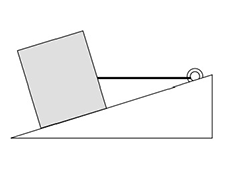
Forces
Variant i Dynamics first
The tutorial covers the idea of forces as interactions between two objects, Newton’s second and third laws in static situations, and free-body diagrams.
Topics Mechanics / Newton's Laws: systems, vectors, forces, and free-body diagrams
Materials
Materials by the UW team
- Instructor Guide


- Pretest


- Exam Questions



- Equipment List

Tutorial details
The tutorial begins by helping students identify the forces exerted on a large stationary block when a person pushes on it and another person pulls horizontally on a rope attached to it. Through discussion with other students and with tutorial instructors, students distinguish between forces that act at a distance and those that require contact. Students draw free-body diagrams for several other simple static situations and rank the magnitudes of the forces on their diagrams. Questions in the tutorial help them to apply Newton’s second and third laws.
The idea of force as an interaction between two objects is introduced. Students are required to identify the object on which each force is exerted and the object exerting the force. Student inability to label forces often reflects strongly held difficulties (e.g., many students are unable to identify the earth as the object exerting the weight force).
It is particularly important in this tutorial that each group of students work together and draw their free-body diagrams on the large sheet of paper provided. They should update their diagrams if they decide changes are appropriate. This ensures group accountability and can also help the instructor quickly check on student progress.
The last section of the tutorial is an extension of the ideas developed in the first two sections. This section can be considered optional if there is not sufficient time in the tutorial section.
For instruction tips, login or register as a verified educator to see the Instructor Guide.
Prerequisites
Students should already have been introduced to Newton’s second and third laws in class.
Research
- L. McDermott, P. Shaffer, and M. Somers, Research as a guide for teaching introductory mechanics: An illustration in the context of the Atwood's machine, Am. J. Phys. 62 (1), 46 (1994).
Coming Soon! We hope to release the discussion section on each tutorial soon.

